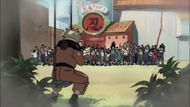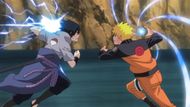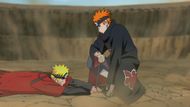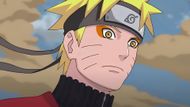Naruto Uzumaki is the protagonist of Naruto, and he has inspired thousands of fans of the series. Let’s begin where everything does in Naruto: with a boy everyone hates, but no one explains why.
The earliest Naruto we meet is brash, obnoxious, and constantly trying to get attention. He paints over the Hokage faces, pulls pranks on his teachers, and causes havoc because being noticed for the wrong reasons was also better than being invisible.
Unfortunately, no one tells him why he’s alone. Moreover, he isn’t even allowed to know about the Nine-Tails sealed within him. Hiruzen Sarutobi’s promise to Minato to raise Naruto as a hero quickly becomes laughable when we realize the village did the exact opposite. They didn’t give him the truth, the love, or even proper nutrition. Instant ramen and isolation were his daily routine.
This outsider status became his greatest weapon, not just in battle, but morally. Because he didn’t accept the shinobi world’s cynicism, he dreamed bigger. He dreamed of being Hokage, not for power, but for recognition.

Naruto Uzumaki is different from other shonen main characters because his character is not perfect. He’s not always wise. He makes mistakes and might panic and have a breakdown. But that’s the point.
At the heart of everything Naruto does is a simple desire: to be acknowledged. He’s not asking for glory or riches or to be worshiped. He just wants people to see him.
That little boy on the swing, the one everyone ignored, wanted so desperately to matter. And by the end of the series, he does. When the villagers lift him on their shoulders after defeating Pain, we see a culmination not of power, but of recognition. For once, he wants to be seen.
The burden of bonds: The relationship between Naruto Uzumaki and Sasuke Uchiha

Sasuke was Naruto’s first real peer, as he also was someone equally lonely, equally misunderstood. But while Naruto sought connection, Sasuke sought power through detachment. They represented two paths born from the same pain.
When Sasuke leaves the village, Naruto doesn’t just lose a friend, but he loses the one person who validated his entire childhood. His failure to bring Sasuke back haunts him throughout the entire second half of the series. It’s why he trains harder. His mission to save Sasuke isn’t just about friendship; rather, it’s a symbolic stand against the very idea that people are beyond saving.
When he finally confronts Sasuke at the end of the series, he doesn’t try to kill him. He doesn’t even try to “win.” He just holds on, gets beaten bloody, and refuses to let go. Ultimately, this saved both of the boys.
Pain and the Cycle of Hatred

Perhaps no arc in the series is more emblematic of Naruto Uzumaki's growth than the Pain arc. After losing Jiraiya, one of the few people to ever believe in him, Naruto Uzumaki is filled with rage. When Hinata is attacked and seemingly killed, he loses control and nearly releases the Nine-Tails completely. He’s ready to end it all. And that’s exactly what Pain wanted.
But Naruto Uzumaki doesn’t give in; rather, he chooses to understand Nagato, even though every fiber of his being wants to destroy him. That’s what makes Naruto a revolutionary figure in his universe. The shinobi system is built on war, secrecy, and sacrifice. Naruto, a child abandoned by that very system, becomes its loudest critic and its most passionate reformer.
Naruto Uzumaki: The idealist in a cynical world

Naruto Uzumaki is not naive. He knows people have died. He knows war has ravaged his world. He knows the cost of hatred. But he chooses kindness anyway. In a world where shinobi are taught to kill without question, where orphans are weapons and bloodlines are currency, Naruto says there’s another way.
And by living that philosophy, he inspires change. Gaara becomes Kazekage. The villages unite. The tailed beasts trust him. Kurama, who has hated humanity for centuries, bonds with him. All of this happened because Naruto believed.
